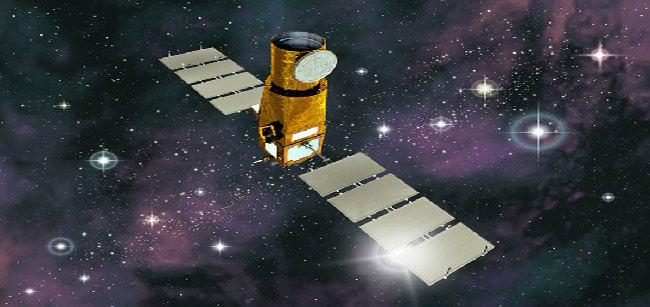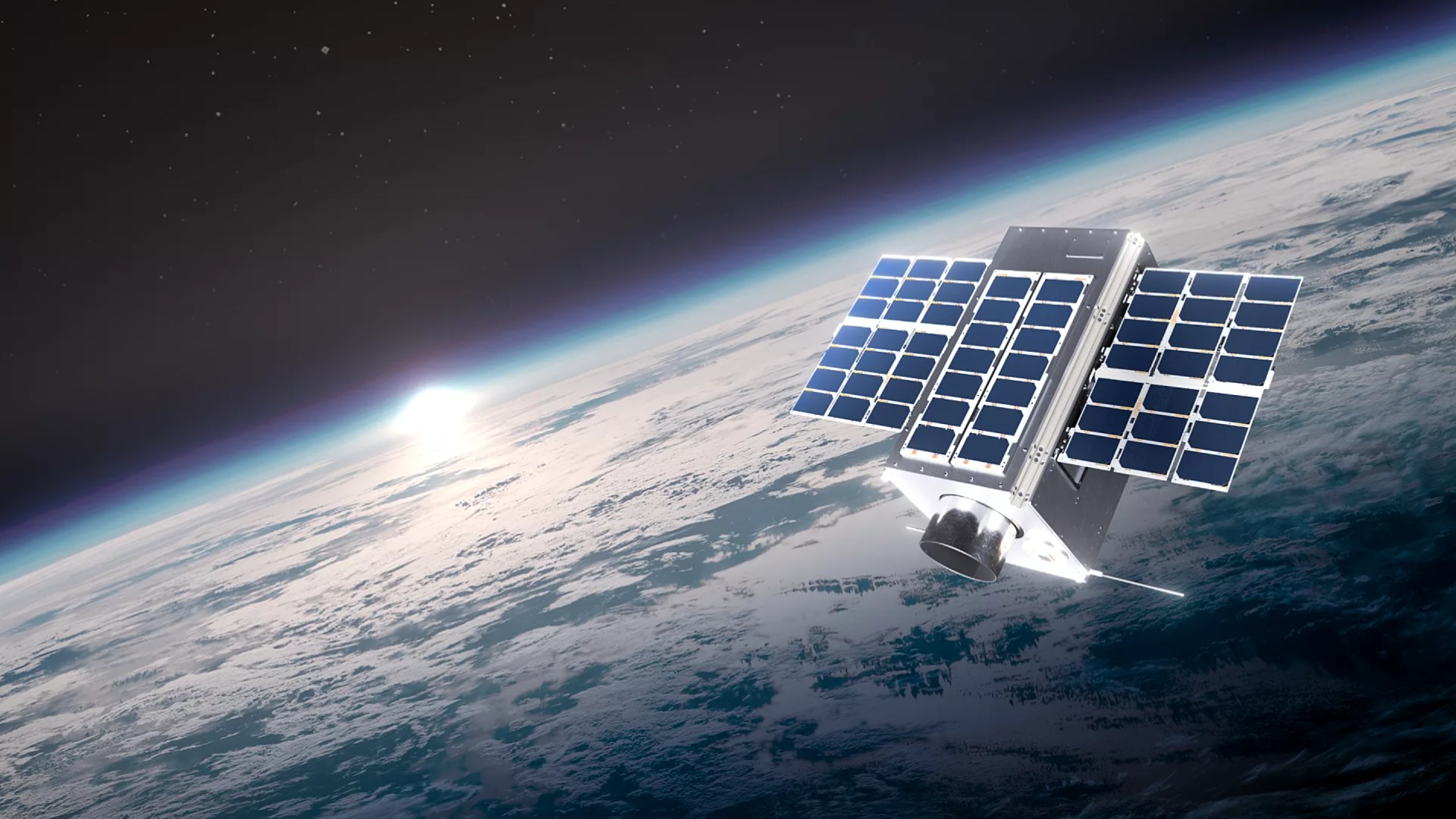Oddball Alien Planets Discovered Among Newfound Worlds

This storywas updated at 5:30 p.m. EDT.
Six new and diverse alien planets ? including a world twice asmassive as Jupiter orbiting a rapidly spinning star ? have been discovered by aplanet-hunting space observatory.
The newfound extrasolarplanets were spotted by the European CoRoT satellite around different stars.They span a broad range of sizes and masses and exhibit an assortment ofphysical properties. The smallest, CoRoT-8b, is approximately 70 percent ofSaturn's size and mass.
Since 1995, scientists have discovered over 450 totalexoplanets.
"With the addition of this new batch, the number of exoplanetsdiscovered by CoRoT has risen to 15," said Magali Deleuil from Laboratoired'Astrophysique de Marseille in France, the head CoRoT's exoplanet program."The increasing size of the census, which includes objects with verydiverse characteristics, is of vital importance for better understanding ofplanetary systems other than our own."
The new collection of planets also includes larger worldsscientists are now calling CoRoT-10b, CoRoT-11b, CoRoT-12b, CoRoT-13b andCoRoT-14b. They belong to the planet class known as 'hot Jupiters.' [Photos:Strangest alien planets.]
The CoRoT satellite also spotted a brown dwarf (CoRoT-15b),which is an intermediate object between a planet and a star. CoRoT-15b is about60 times as massive as Jupiter. ?
Breaking space news, the latest updates on rocket launches, skywatching events and more!
Oddball exoplanets
And there are other peculiarities among the newfoundplanets.
CoRoT-10b, for instance, has an extremely eccentric orbitthat results in extreme variations in its surface temperature over the courseof its year. The exoplanet's elongated orbit takes it very close to its hoststar,? and the substantial variation in the orbital distance results in atenfold increase in the planet's exposure to stellar radiation.
Scientists estimate that the surface temperature of theplanet may increase from 480 degrees to over 1,100 degrees Fahrenheit (250 to600 degrees Celsius), in only 13 days, which is the length of a year onCoRoT-10b.
CoRoT-8b, whose internal structure should be similar to thatof icy, giant planets like Uranus and Neptune, is the second smallest exoplanetdiscovered by the CoRoT team so far.
"The rich diversity emerging from this sample is a veryinteresting result, showing CoRoT's ability to detectexoplanets, which are rather different from each other," said MalcolmFridlund, a project scientist for CoRoT at the European Space Agency (ESA)."Being able to study a wide variety of planets will provide importantinsights into the formation and evolution of planetary systems."
Additionally, CoRoT-11b's parent star spins around its axisat an extraordinarily fast rate. The rapidly rotating parent star makes itstand out from the others. The star spins around its axis in less than two days? an exceptionally high speed. In comparison, our sun has a rotation period ofabout 26 days.
"This is the third exoplanet discovered around such arapidly rotating star," said Davide Gandolfi, the ESA Research Fellow wholed the study of CoRoT-11b. "Because of the fast rotation of its hoststar, such a planet could only have been discovered because it transits infront of it, thus only a transit-hunger, such as CoRoT, could have spottedit."
CoRoT-12b, 13b and 14b all orbit close to their host star,but each exhibit different properties. CoRoT-13b is smaller than Jupiter andtwice as dense, suggesting a massive, rocky core inside the planet.
CoRoT-14b has a size similar to Jupiter, but, amazingly, is 7.5times the mass and 6 times the density of our solar system's largest planet.Planets, such as CoRoT-14b, that are very massive and very hot are rare, andthis exoplanet marks only the second of this type that has been discovered sofar.
How CoRoT hunts alien planets
In its huntfor exoplanets, CoRoT (short for Convection Rotation and planetaryTransits) ? which is operated by the French space agency CNES ? observes alarge number of stars over a significant period of time, and tries to spot anysubtle changes in luminosity of the stars' emitted light.
This 'dimming' could be an indicator that the star hosts aplanet, which, at the point when the light changes, is transiting in front ofthe star and partially obscuring its light. This transit technique is one ofseveral methods that are used to search for exoplanets. It is also thetechnique that enables astronomers to determine the radius of the alien planet? by measuring the depth of the transit.
CoRoT does not work alone, however. Adequate follow-upobservations are needed to confirm that the transiting body is indeed a planet,and not a cosmic body whose structure or behavior simply mimics the presence ofa planet (such as one or more companion stars).
Once CoRoT detects a candidate planet-hosting star, some ofthe foremost ground-based observations then collect high-resolution images andspectra, which yield a wealth of additional information.
"Thisresult anticipates what may be achieved by future space-based missionssearching for exoplanets," said Fridlund.
CoRoT is aprecursor for PLATO, a Cosmic Vision candidate mission that will be able to seekplanetary transits over a much larger sample of stars due to its much widerfield of view. PLATO will be equipped with 34 telescopes, and will studybrighter stars than those that can be observed with CoRoT, making it possibleto determine the age of the planet-hosting stars through astroseismologymeasurements.
Theseimprovements, plus the ability to more accurately estimate exoplanet masses andsizes using PLATO, will provide an important step in the quest to understandthe conditions that favor the formation of Earth-like planets.
- Gallery - StrangestAlien Planets
- Top 10 Extreme PlanetFacts
- Color-ChangingPlanets Could Hold Clues to Alien Life

Denise Chow is a former Space.com staff writer who then worked as assistant managing editor at Live Science before moving to NBC News as a science reporter, where she focuses on general science and climate change. She spent two years with Space.com, writing about rocket launches and covering NASA's final three space shuttle missions, before joining the Live Science team in 2013. A Canadian transplant, Denise has a bachelor's degree from the University of Toronto, and a master's degree in journalism from New York University. At NBC News, Denise covers general science and climate change.
